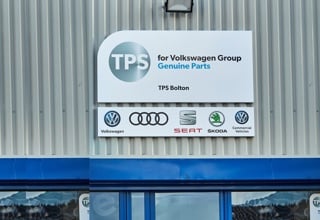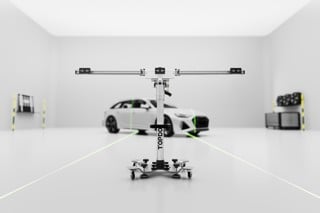Digital technologies are a part of every customer’s life. From video conferencing and web browsing using a tablet, through to receiving calendar alerts, texts and emails on our smartphones, it is rare these days to be unconnected. We can even build a shopping list on a smartphone and connect it to a fridge these days.
But digitisation takes on a unique form when it comes to shopping, and nowhere more so than in a business to business environment. High street retailers have become adept at transferring the loyalty and interest of their customers into the virtual world by delivering rewarding online experiences.
Now it’s the turn of B2B sellers, who are looking to emulate this success, knowing that the key to long-term survival is by offering digital services which match those that their customers encounter day in, day out.
The challenge, however, is to transfer what is often a very complex portfolio of products and services, such as those offered by automotive parts dealers, onto an easily navigable ecommerce site and maintain a traditional over-the-counter service too. Contrary to what dealers are experiencing, these two things are not mutually exclusive.
A recent study by Forrester indicates that it is this product complexity that prevents B2B companies from increasing online sales (eg. through ecommerce) from 35 percent of their current revenue mix to the goal of more than 50 percent. There are so many considerations, from product variables and pricing fluctuations through to bundles and promotions which, when handled manually, are relatively easy to manage, but more daunting when they need to be kept updated on a website.
Perhaps it’s easier to believe that customers are happy to only interact with them over the counter, but according to research carried out by Frost and Sullivan in 2015 between 10 and 15 percent of all global parts revenue will be generated online by 2025 because of evolving technology and customer behaviour.
You only have to look around the automotive industry to see the trends, with Goodyear, for example, going direct to customers with portals that allow them to buy direct with dealer fulfilment.
Having it all ways
There is clearly a balance to be struck between servicing traditional direct and indirect channels and simultaneously building a seamless online offer. While the direction of travel seems to be towards a digital future, there are many customers who still want to have the choice.
So, if selling online could potentially open the door to more customers and therefore increased revenues, the biggest issue is likely to be how to streamline a large and assorted range of products and services to ensure they can be specified, configured and priced correctly without face to face contact.
Most standard ecommerce platforms are not built for B2B commerce models, but instead for simpler B2C commerce, and this can cause problems when it comes to sourcing, managing and distributing information on product specs, costs, customer data and business logistics.
Powerful business tools such as CRM and ERP, which are designed to help manage complex processes ranging from sales to manufacturing and configuration can also help, but they often work in isolation, which means that there can be a disconnect between front and back office operations.
One solution is to consider platform-agnostic systems built specifically to work with, and bridge the gaps, between disparate technologies. An example of this is 'configure price quote' (CPQ) applications which can accurately deliver information and ensure that B2B buyers have a consistent experience when researching, pricing, configuring, and ultimately buying and receiving a product or service. That means across all channels, online, direct or indirect.
Automotive dealers need to think about their own unique product range, and the particular challenges they face with customers on a daily basis in order to set objectives. They can then decide which technology is best placed to assist them, their team and their business model.
Embracing online ecommerce does not mean leaving over-the-counter sales behind, so finding an application like CPQ that can support all routes to market is a good idea. What is more important, however, is actually doing something.
Ecommerce and the digital revolution has already made its mark on almost all aspects of life, and whilst traditional sales methods are still justifiable, the option for customers to engage online will put automotive dealers ahead of the game, and steal a march on the competition. Don’t get left behind.
Author: Stephen Hardy, UK managing director, FPX



















Login to comment
Comments
No comments have been made yet.